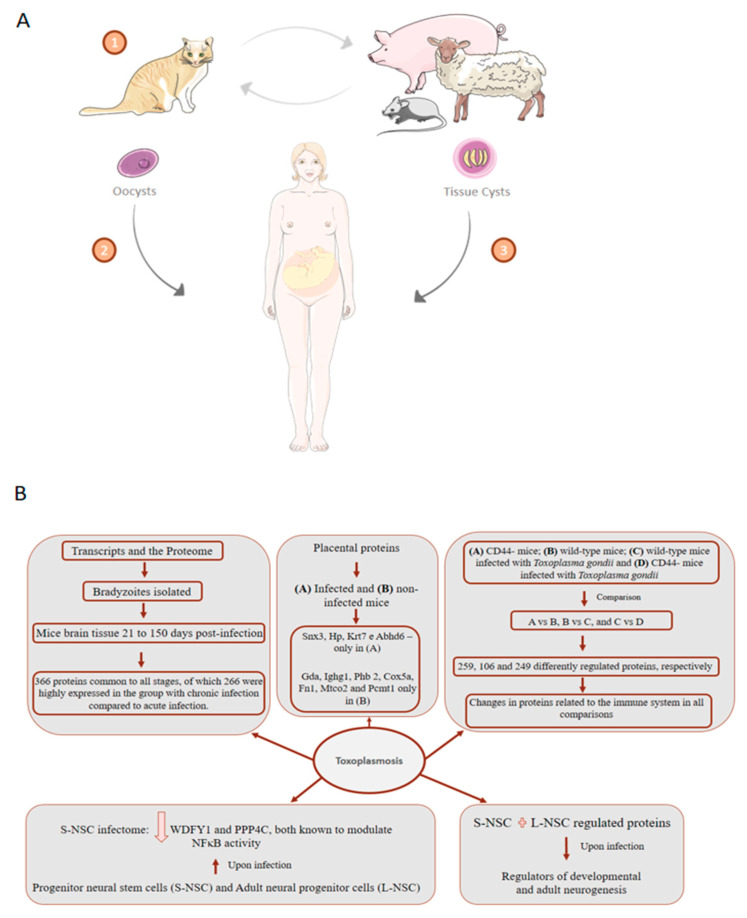Figure 6.
Toxoplasmosis transmission cycle and representative proteomics-driven studies. (A) (1) In the cat, after ingesting tissues containing oocysts or cysts, these are released into the body and penetrate the intestinal epithelium where they undergo asexual reproduction followed by sexual reproduction, transforming into oocysts and can be excreted together with the feces. Oocysts can survive for months in the environment and are resistant to disinfectants, freezing, and drying, but destroyed by heating at 70 °C for 10 min. Other animals, such as pigs, sheep, rats, and including man (2) (intermediate hosts), can consume oocysts present in the environment and become contaminated. The oocyst ruptures in the intestine of the intermediate host, releasing the sporozoites that invade the enterocytes. In the enterocyte, each parasite is called a tachyzoite. Tachyzoites spread through the animal’s body and can form cysts in nervous and muscular tissue, which can be consumed by humans and cause infection (3). Tachyzoite multiplies asexually and disrupts the host cell. After the invasion of a new cell by a tachyzoite, the asexual cycle can lead to the formation of intracellular bradyzoites. The formation of bradyzoites begins to occur with greater intensity when the intermediate host develops specific immunity. (B) Main findings indicated by proteomic studies that explore the proteome of toxoplasmosis infection.

